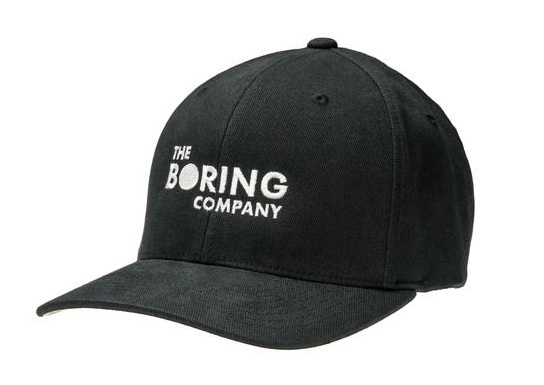
First, the SpaceX CEO claimed that the upcoming and much-anticipated debut launch of the “world’s most powerful rocket” will carry into space Musk’s own cherry-red Tesla Roadster with the stereo playing Bowie’s Space Oddity, where it will orbit around Mars “for a billion years or so,” and now the entrepreneur says his Boring Company is “capping cap orders at 50,000 caps.”
If the whole Boring Company “cap” thing passed you by because you really have better things to do than immerse yourself in the shenanigans taking place inside Musk’s cranium, then allow us to briefly explain.
Following the announcement of his plan to build a futuristic subterranean freeway to banish traffic congestion (if this also passed you by, then read all about it), Musk hit upon a tongue-in-cheek plan to cobble together some cash for the ambitious project by selling baseball caps. The stunt of course also helped to raise the profile of his proposed underground traffic solution.
The $20 cap sold fast (fast for a cap with The Boring Company emblazoned across the front), in its first 24 hours raking in $80,000 in October, 2017. Two weeks ago we learned that “the world’s most boring hat,” as Musk himself describes it, had raised $300,000, with the CEO promising to “build that tunnel one hat at a time.”
And on Sunday Elon tweeted that to keep the cap special, “we are capping cap orders at 50,000 caps,” adding, “Almost there … ”
A short while later, Musk posted possibly one of his most profound tweets to date. It read simply: “Hat.”
He followed up by saying that every 5,000th buyer of the cap will receive it for free, and signed by the delivery guy. But the surprises don’t end there. The recipients will receive it inside one of Boring’s tunnels, while they drive the drilling machine. Blindfolded. Well, that’s what he said in the tweet:
That special hat delivery will take place deep within the real, but fictional (of course), tunnel we are building under LA while you drive the giant machine blindfolded. This will actually happen.
— Elon Musk (@elonmusk) December 3, 2017
He finished up by posting a link to a Spaceballs clip, commenting that the “documentary” had taught him that “the *real* money comes from merchandising.”
Yes, the million bucks raised by 20,000 cap sales will be a drop in the ocean for what The Boring Company requires to follow its plans through, but Musk — not your typical gray-suited, hidden-away CEO — is having fun getting the word out about the project.
The Boring Company has been digging test tunnels in California as it seeks to develop technology to speed up drilling work and as a result cut construction costs. Musk envisions a vast network of tunnels within which high-speed electric sleds will carry vehicles and people across cities in a fraction of the usual time. Officials in cities across the U.S. have already shown an interest in Musk’s idea, while just days ago The Boring Company revealed it’s bidding for a contract to build an express transit line connecting O’Hare Airport to downtown Chicago.



